25+ Abandoned Islands Around The World
What do you picture when you think of an island? Perhaps you imagine a tropical beach packed with tourists or the white buildings that dot Greece’s shores. Some islands looked like that long ago, but they have since become abandoned. Their old buildings are empty shells that residents of the mainland never see.
Some of these islands harbor dark secrets, and others became deserted because the pub on the island was far too loud! Ready to explore some forgotten destinations? Keep reading to see these haunting photos of abandoned islands and learn why all of their inhabitants left.
Deception Island – Antarctica
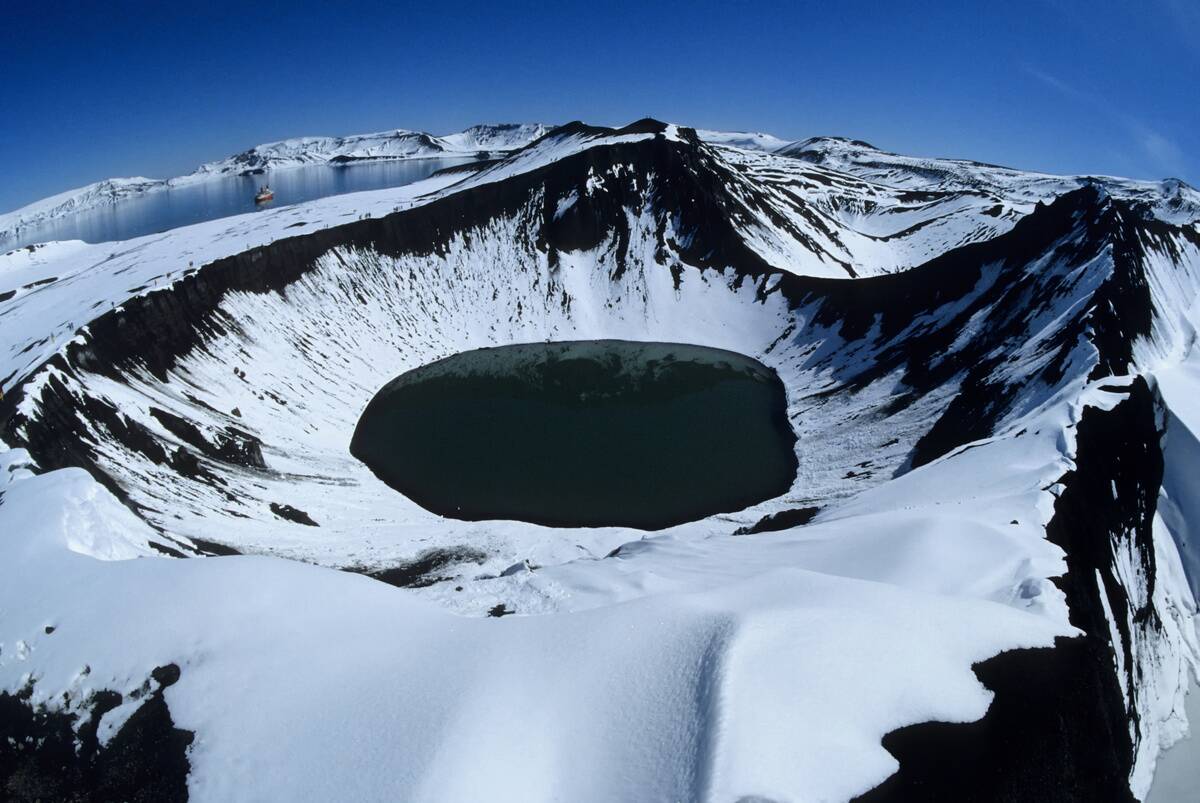
Deception Island lies in the South Shetlands Islands archipelago in Antarctica. For years, explorers considered it to be the safest island on the continent. Explorers, whalers, and fur-sealing hunters used the island as their supply base. But not everyone knew that there was an active volcano there threatening to erupt at any moment.
During the 1960s, several countries sought Deception Island for oil mining. But the volcano erupted in both 1967 and 1969, destroying all bases and equipment. Today, the island is only visited by the occasional research base and tourist boat.
Gunkanjima – Nagasaki, Japan
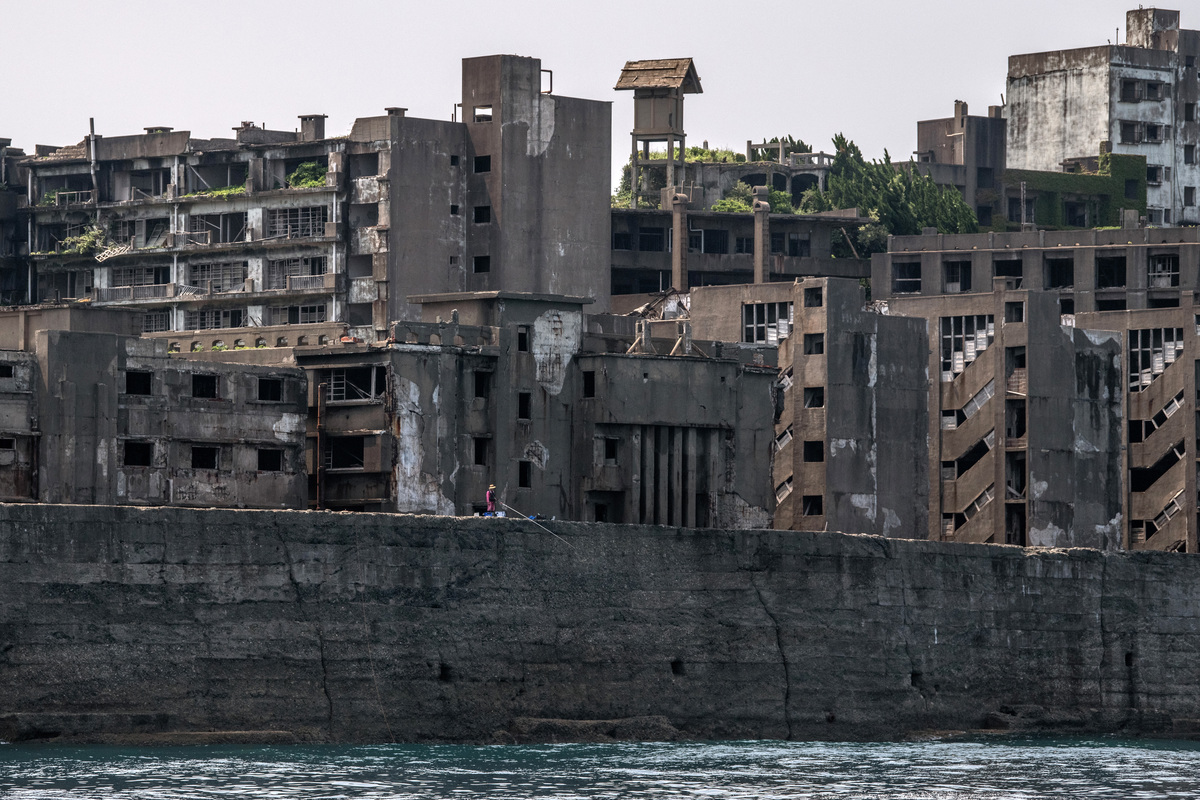
Gunkanjima, which means “Battleship Island,” was once the most densely populated island in the world. Also called Hashima Island, the area was sought-after for its coal mining. When the Mitsubishi Corporation bought the island in 1890, they began building apartments there around 1916.
Families rapidly moved to Gunkanjima for work opportunities. At one point, there were 5,259 people per 16 acres. But as petroleum replaced coal in the 1960s, facilities began to close. The residents left, leaving behind shells of concrete apartment blocks. Today, the island sits abandoned, and tourists can visit part of it.
Brentford Ait – London, England
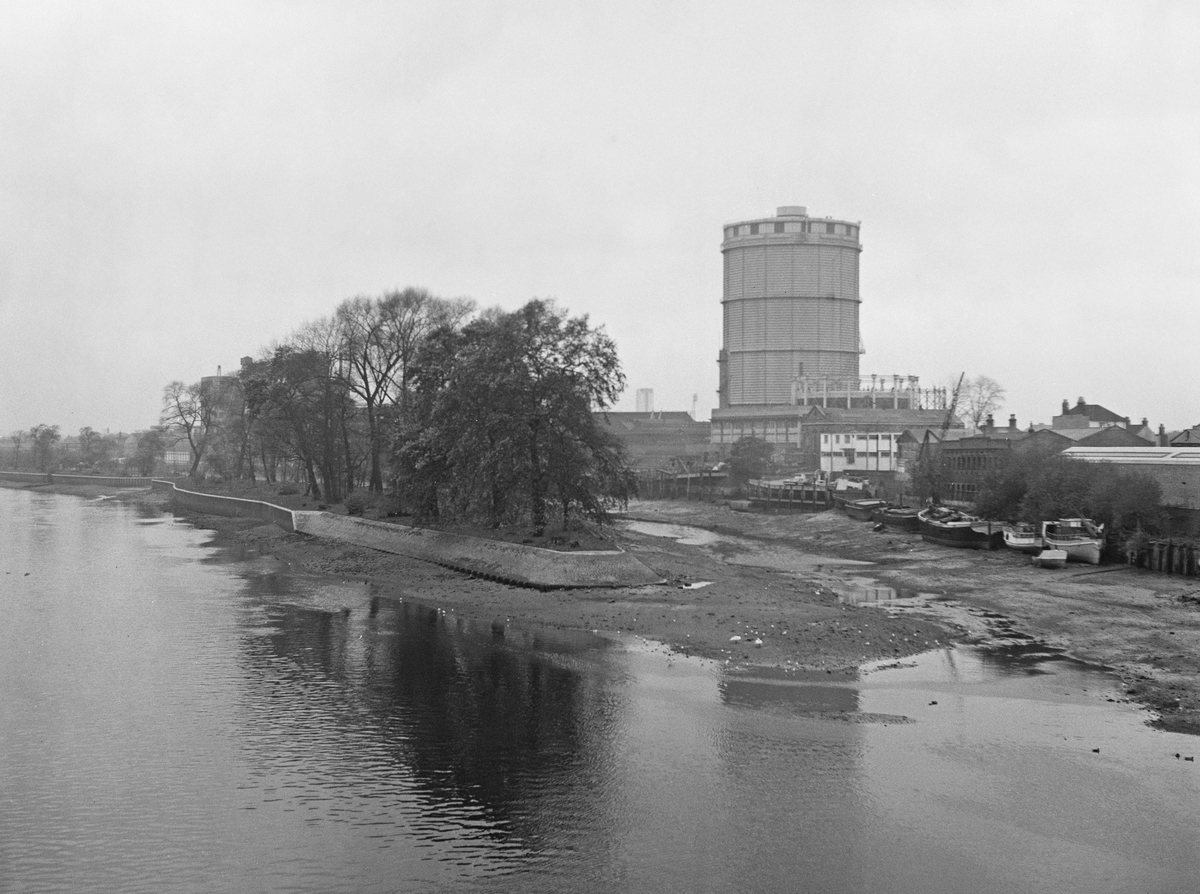
Brentford Ait is an island in the River Thames. It used to house several trade buildings, including a notorious pub called Three Swans. In the late 18th and early 19th centuries, the pub would reportedly get so loud that neighbors could hear it on both sides of the river.
By 1812, resident Robert Hunter had had enough. He bought Brentford Ait, closed Three Swans Pubs, and even demolished the house and fishing pond. In the 1920s, people planted trees on the island to conceal its buildings. If you were to see Brentford Ait from London, you would only see trees.
Suakin Island – Suakin, Sudan
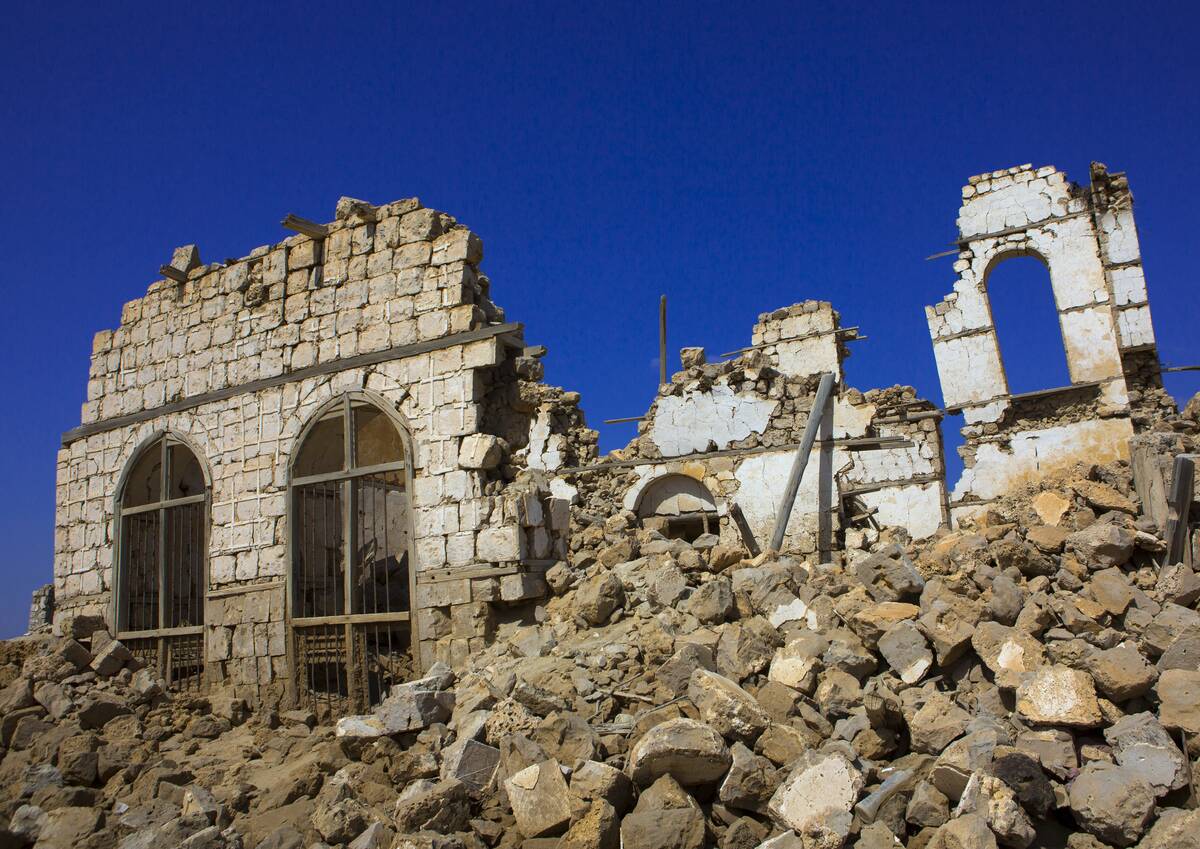
Suakin Island had been a bustling port city and hub for over 3,000 years. First developed during the tenth century B.C.E., Suakin Island acted as a trade outlet for the Red Sea. In later years, the island became an outlet for Muslims on the pilgrimage to Mecca. But one business became its wrongdoing: the slave trade.
During the 19th century, Suakin Island became a slave trade hub. As the slave trade declined in the 1920s, so too did the island. The area was forgotten for decades. In December 2018, Turkey bought the island for a tourist destination, and there are plans to restore it.
Holland Island – Maryland, U.S.A.
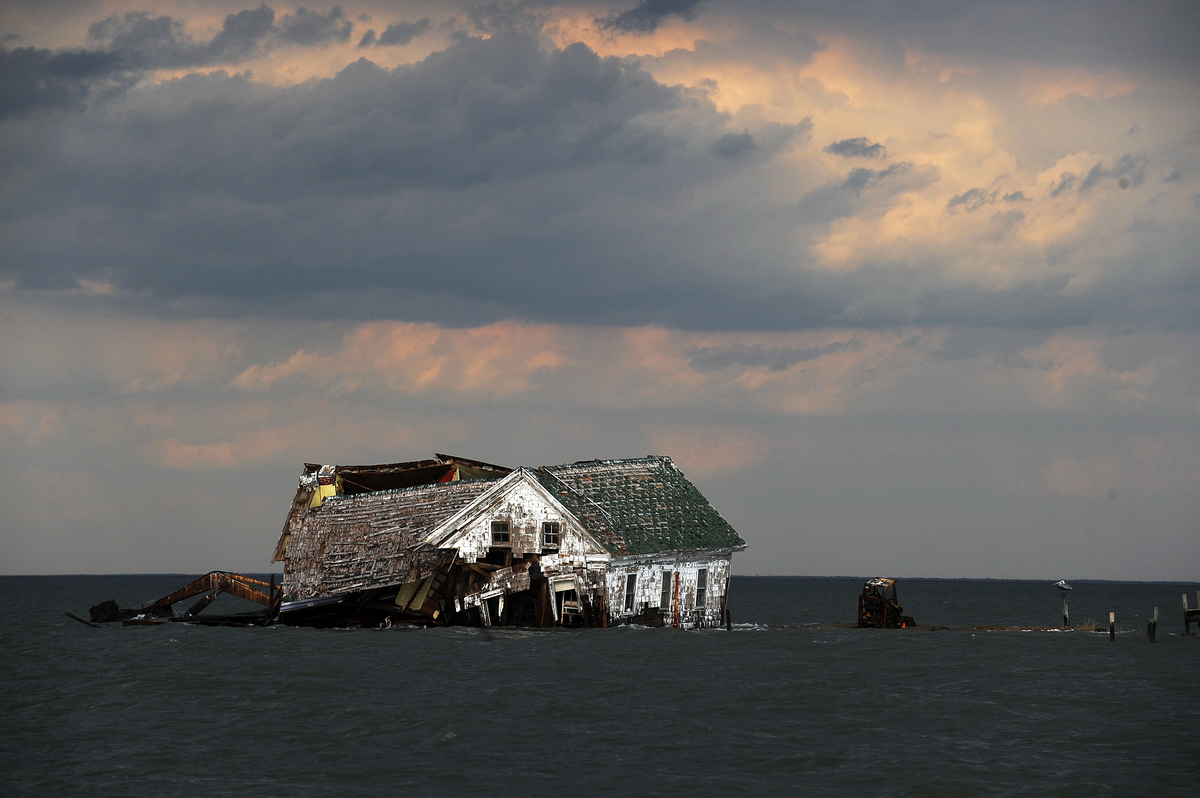
Holland Island in the Chesapeake Bay of Maryland is rapidly eroding. The last house has already disappeared into the sea, and the rest is soon to follow. In the 1600s, the first settlers arrived at the island, and Holland became the most popular Chesapeake island by 1910.
In 1914, however, disaster struck. The wind and tide eroded the land where houses stood. Attempts to build stone walls did not succeed. Hence, most people took their belongings and left. In 2010, the only remaining house on Holland Island (built in 1889) collapsed.
Spinalonga – Crete, Greece
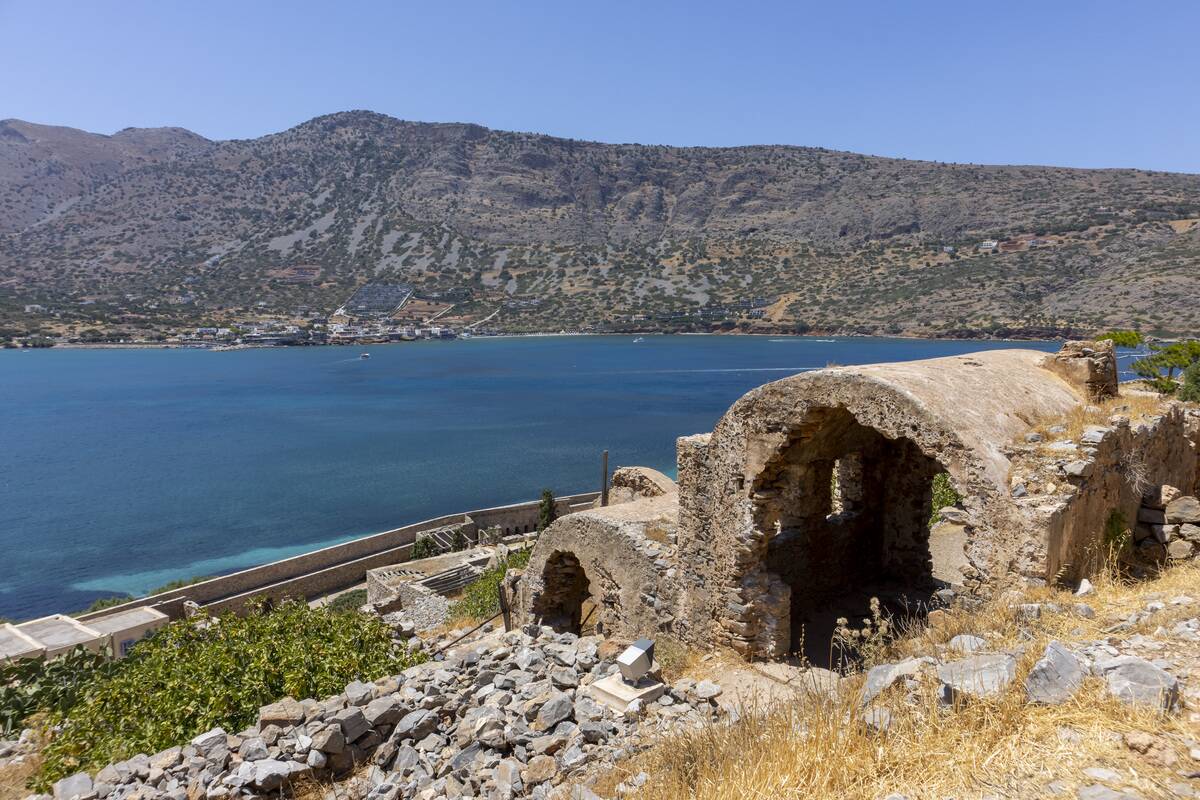
Near Crete lies the lesser-known Greek island, Spinalonga. Those who learned about Spinalonga may remember it for its dark history. In the 16th century, the island was first ruled by the Venetians until it was taken over by the Cretes in 1878. By the next century, Spinalonga became a leper colony.
As a smaller leper colony, Spinalonga was under-staffed. According to reports, only one doctor stayed on the island at one time. It closed down in 1957 as one of the last leper colonies remaining. Today, Spinalonga is referenced in pop culture, such as Victoria Hislop’s book The Island.
Ōkunoshima Island – akehara, Japan
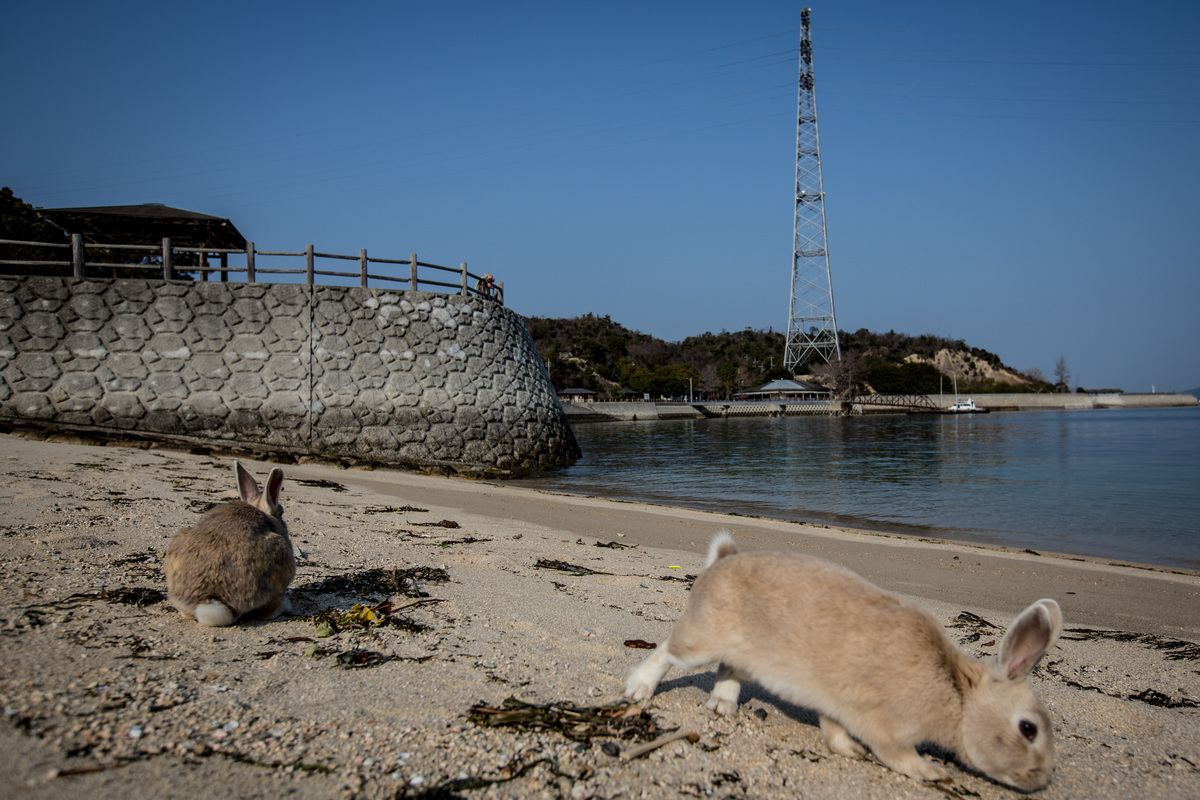
Ōkunoshima Island has remained abandoned since World War II. Only three families lived on the island until 1925 when the Imperial Japanese Army used the site for chemical weapon testing. Researchers produced mustard gas and tear gas for the war there. Today, its only inhabitants are incredibly friendly bunnies.
When the Japanese armed forces were testing their weapons, they used rabbits for their studies. After the war ended, the Allies debated either burning, dumping, or burying Ōkunoshima, but they were told to stay quiet about the experiments. They released all the test rabbits onto the island, where they still live today. Tourists can visit Ōkunoshima to feed the bunnies.
St. Kilda – North Uist, Scotland
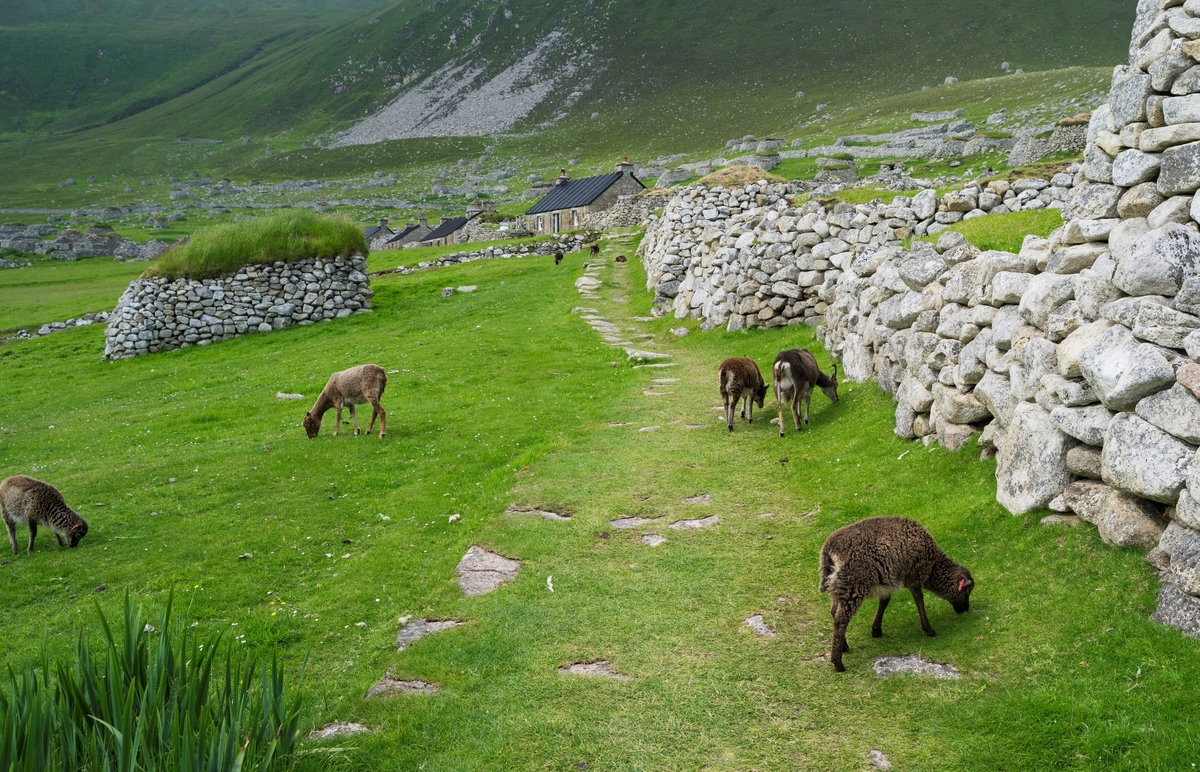
St. Kilda is an archipelago, and its biggest island is Hirta. Historians are unclear when St. Kilda was first inhabited, the earliest written records go back to the Late Middle Ages. It became known as a puffin and seabird breeding site, but residents left en masse in 1930.
There are several reasons why St. Kilda was evacuated. An influenza outbreak and crop failures occurred at the same time. Tourism and military occupation ruined the natives’ routines, making them more susceptible to the harsh weather. Today, St. Kilda is a UNESCO World Heritage Site with a few functional buildings and several ruins.
Clipperton Island – Mexico
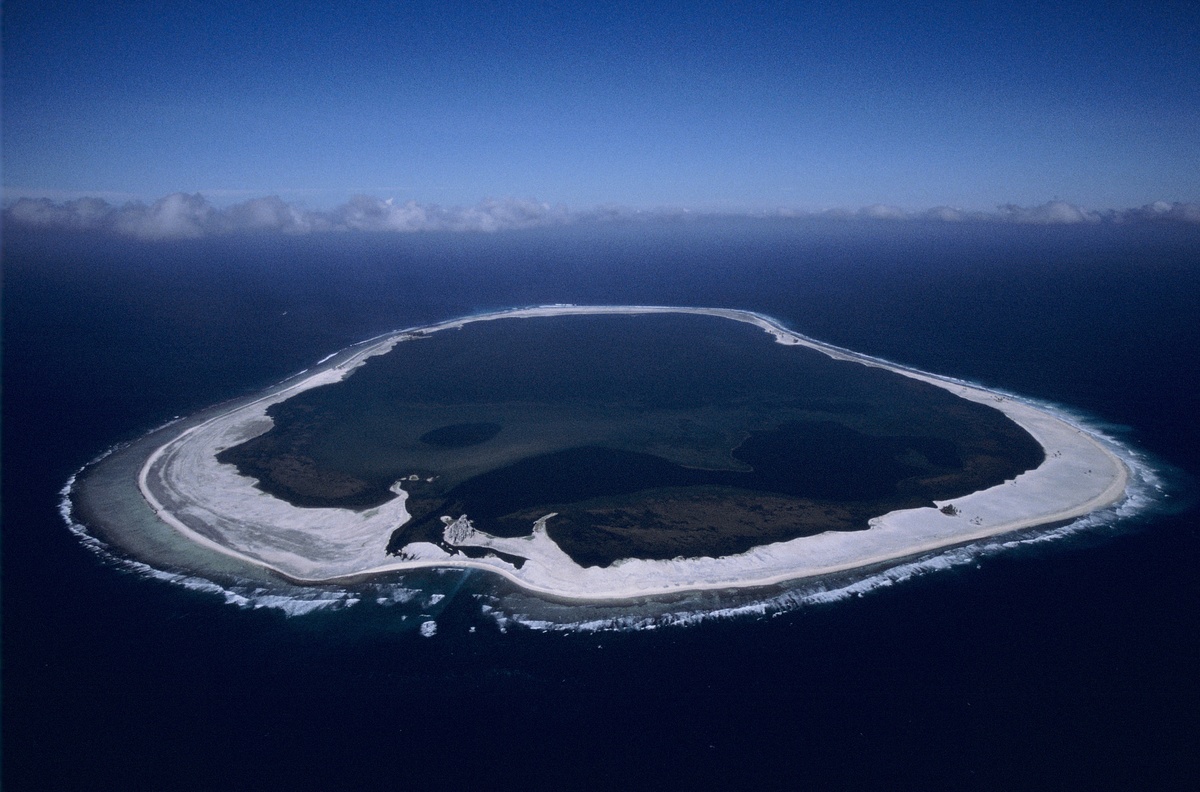
Travel 670 miles from Mexico, and you’ll find Clipperton Island. However, nobody will be there waiting for you. In the 1700s, Spanish explorers discovered Clipperton before the French quickly overtook it. By the early 20th century, Britain and Mexico occupied the island to build a mining settlement.
However, the settlers struggled on Clipperton. Scurvy broke out, and residents violently fought each other for control of the island. By the end of World War II, no one lived on Clipperton. Occasionally, scientists will visit the island, but otherwise, it is forgotten.
Tree Island – Hainan, Peoples’ Republic Of China
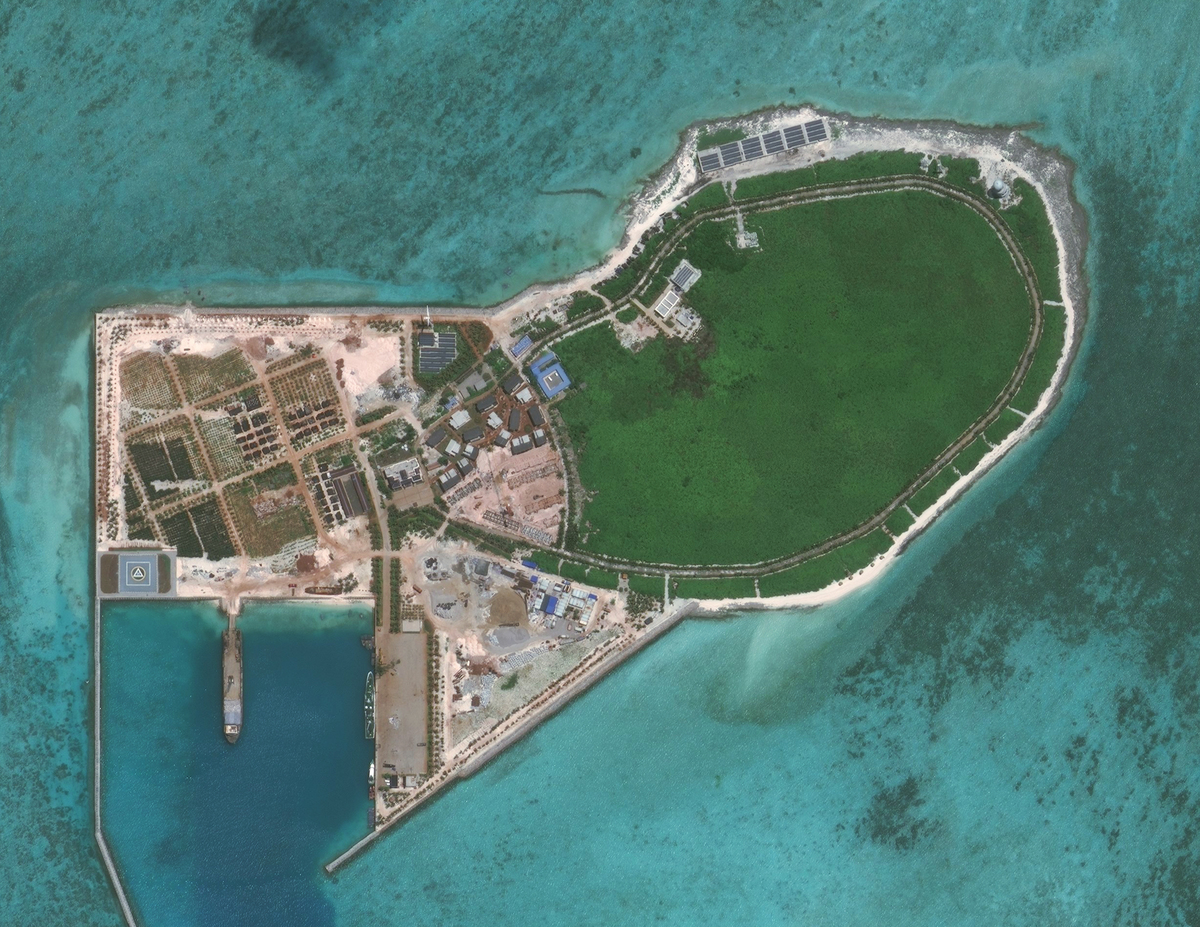
Tree Island is a historic location in the South China Sea. In the 15th century, fishermen visited the island for their daily catch. Evidence indicates that people lived there, since homes and temples still stand today. Little information on the island’s history is readily available, though.
Tree Island is currently open to the public, with an ancient temple from the Ming Dynasty and beach volleyball courts. However, its ownership is currently disputed, as Vietnam and Taiwan claim some ownership rights as well.
Palmyra Atoll – Hawaii, U.S.A.
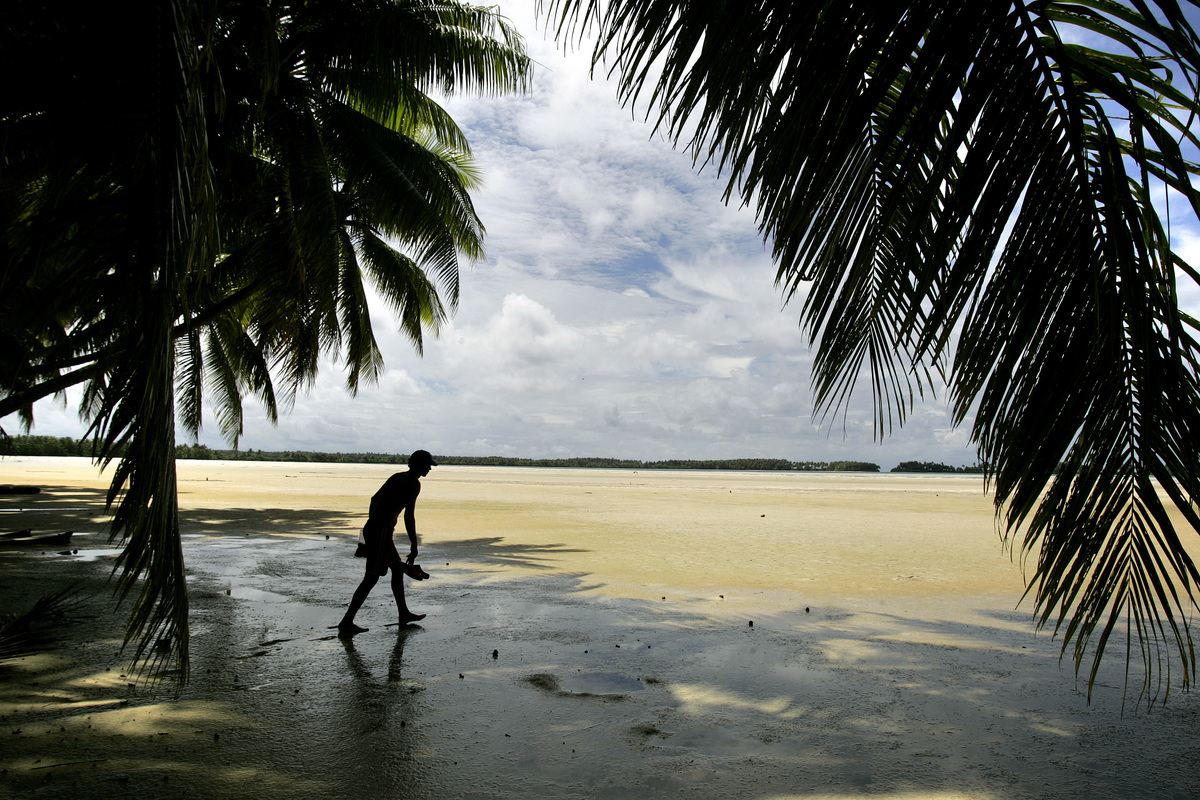
Palmyra Atoll is part of the Hawaiian Islands, although the nearest land to it is 3,355 miles away. Despite being owned by the U.S., the island is uninhabited. Since the 18th century, sailors have visited Palmyra Atoll to explore and hunt for treasure.
In the 20th century, the U.S. Navy took over Palmyra Atoll. They built airstrips and docks during World War II before they abandoned the island. In the ’80s, the island was in the news for a double-murder that occurred there, which became the basis for the 1991 true crime novel And the Sea Will Tell.
Hashima Island – Nagasaki, Japan

Located off the coast of Nagasaki, Japan, Hashima Island is commonly referred to ask Battleship Island due to its shape being a rough likeness to a ship. The island’s most notable feature is the concrete high-rises built up by the Mitsubishi Corporation during Japan’s rapid industrialization in the 1900s.
And while the island was once booming with people, it is now home to nothing but nature and the surrounding sea. Battleship Islands peak population was in 1959, with inhabitants reaching 5,259. The island was used in a few scenes for the 2012 James Bond film Skyfall.
Poveglia – Italy

Located in the Venetian Lagoon of northern Italy, Poveglia has a bit of a haunting history. Also known as Plague Island, during the late 1700s and early 1800s, victims of the plague would be brought to this island to quarantine. It’s been reported that the island was “home” to hundreds of thousands of victims.
Later in its history, Poveglia was used as a mental hospital, of which closed in 1968. The now-abandoned island has been featured on more than one paranormal show!
Ross Island – India

Part of the Andaman Islands in India, the British first attempted to settle on Ross Island back in the 1780s. But with the ever-changing weather that claimed many lives, they abandoned their mission until 1857. They then claimed the land, using it as a base to keep or Indian mutineers.
Through the years, though, the prisoners were moved to various other islands, and superior officers used Ross as administrative headquarters until the 1940s. It was then that they abandoned the island’s churches, residential housing, and power supply, leaving nature to overrun the island.
Pollepel Island – New York
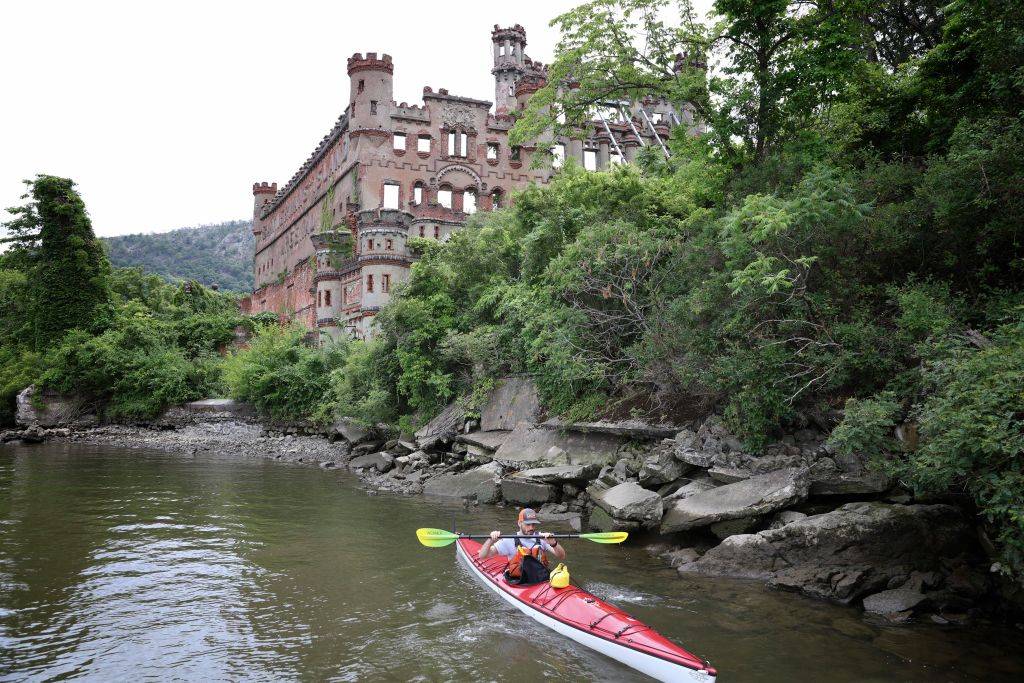
Unlike other abandoned islands, the ruins on Pollepel Island, located in New York, were never part of a thriving community, hospital, or prison camp, but rather for one man’s residence and business ventures. Scottish businessman Francis Bannerman made his living by founding a company that sold military equipment.
In the early 1900s, Bannerman bought Pollepel Island as a place to store his stock, building the Scottish-like castle that still stands on the island today. Unfortunately, the castle was never completed, with constructions halting indefinitely when Bannerman passed away in 1918. While tourists are now allowed to tour the island and castle, the island has no permanent residence.
Tetepare Island, Solomon Islands – The South Pacific
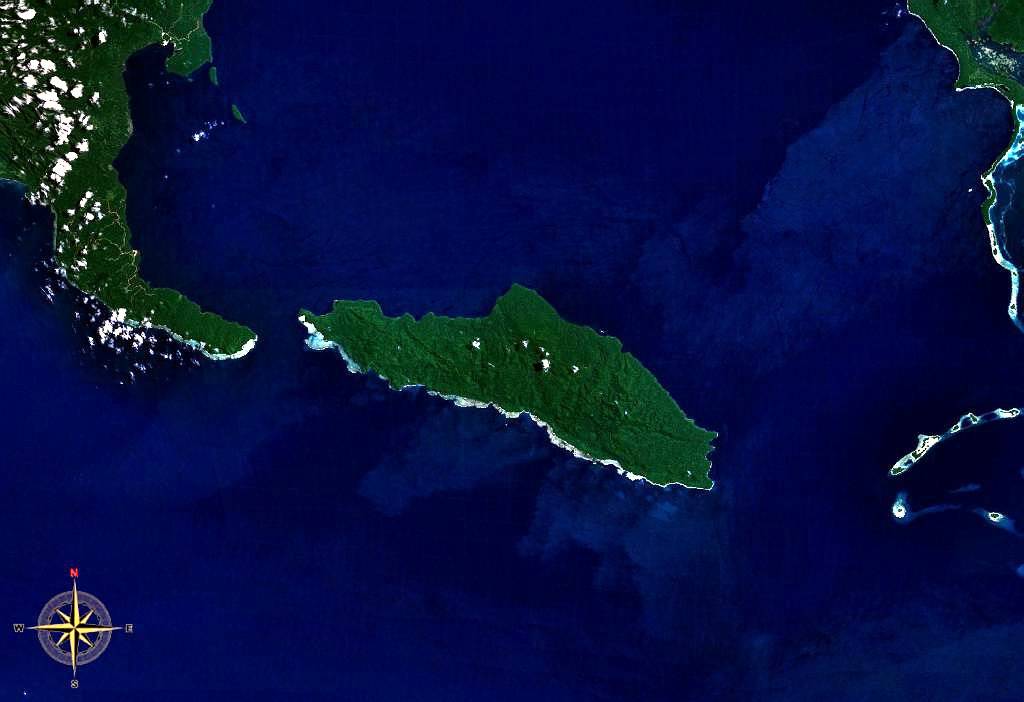
Located in the South Pacific, Tetepaer Island of the Solomon Islands was once inhabited by a local tribe. And while not much is known about the tribe, historians believe they had unique costumes, language, and a completely different culture than anything else in the world.
Unfortunately, something happened to the locals around 1860. What that is exactly, remains a mystery. It’s believed they either abandoned the island for some reason, had an outbreak of disease, or were captured. Either way, the island remains uninhabited to this day.
King Island – Alaska
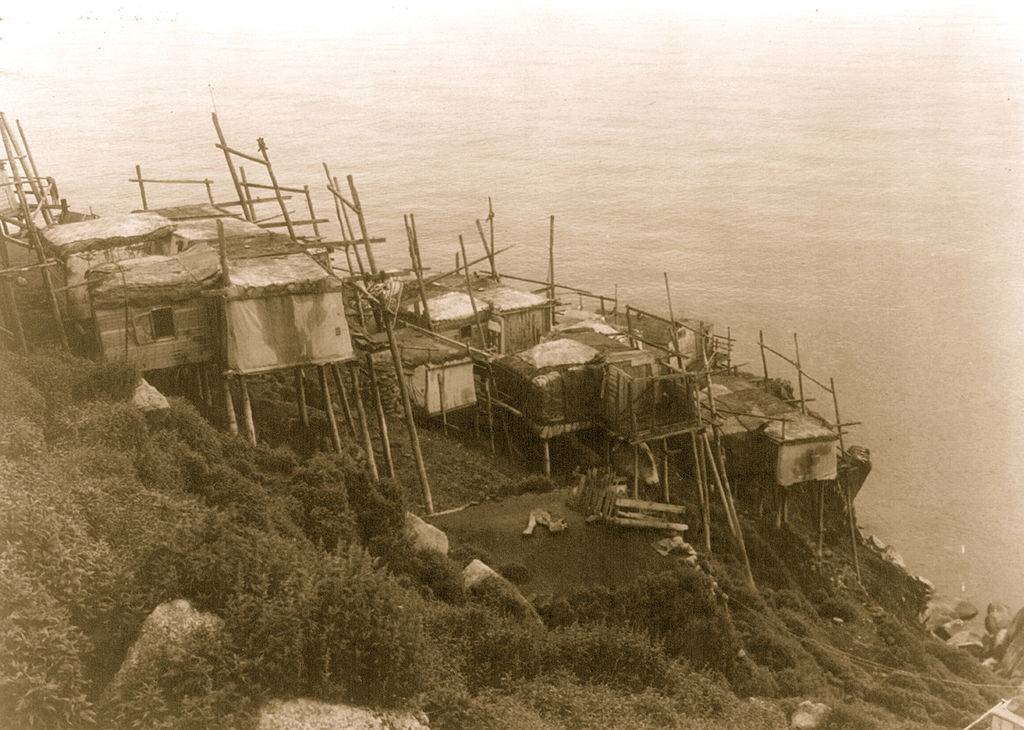
Located 40 miles off the coast of mainland Alaska, King Island is characterized as a hostile place. But even its jagged cliffs, rough waters, and freezing temperatures didn’t sway brave people from settling on the island. Locals built a village on the cliffside, Ukivok, hunting marine mammals during the harsh winter months before heading back to the mainland for summer.
Everything changed for the local people when the island’s school shut down. With the harsh conditions, it was difficult for the elders to hunt without the help of the younger tribe members. So, they stopped venturing to King Island, abandoning the village on the cliff.
Bikini Atoll – Marshall Islands
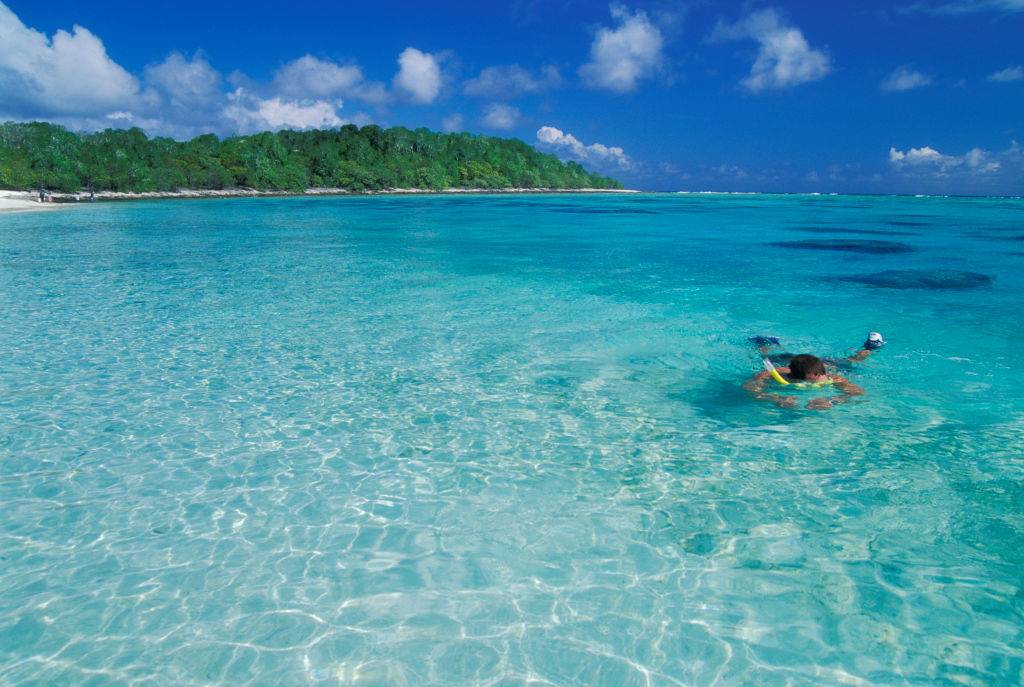
While Bikini Atoll looks like paradise, don’t let the beautiful blue water fool you. The Marshall Island has a history that makes it completely inhabitable. People did once live on Bikini Atoll, but they were persuaded to relocate after the Second World War, in 1946, with the promise they’d be able to return. They never got the chance.
Once the locals were removed from Bikini Atoll, the United States used the site for 23 nuclear tests, contaminating the soil and groundwater and making it impossible for anyone to live there. Today, a few caretakers will go to the island. Otherwise, it’s deserted.
San Giorgio In Alga – Northern Italy

The island of San Giorgio in Alga is located in Northern Italy and was founded around 1000 AD after a Benedictine monastery was built on its land. After the first monetary was built, more followed, bringing with them a small community. But, in 1717, a fire burnt down a majority of the buildings on the island.
Years later, in 1799, San Giorgio in Alga was used as a political prison. Then again, in 1944, as a secret military base for the German army. But that was the last anyone had “lived” on the island. Today, it is completely abandoned.
Ile Moyenne – Mahé, Seychelles
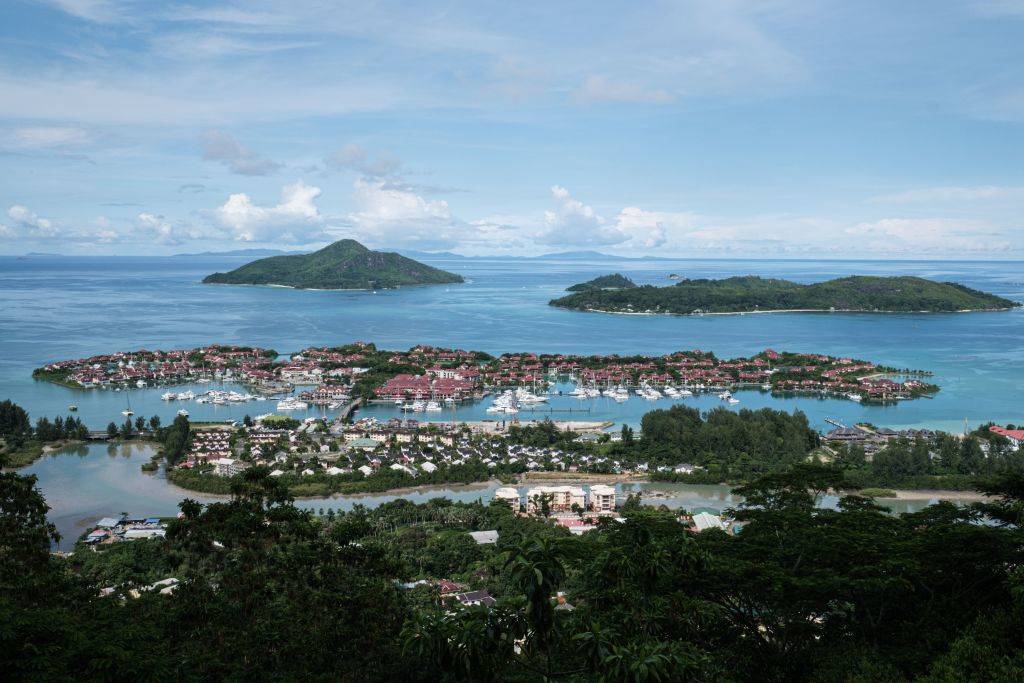
The small Ile Moyenne, located off the coast of Mahé, Seychelles, was purchased back in 1962 for £8,000 by Brendon Grimshaw. After the purchase, he marketed the island as a nature reserve, charging tourists 12 euro to explore the land, hang out on the beach, and dine at the “Jolly Rodger.”
Grimshaw and his friend Rene Antoine Lafortune bought and bred giant tortoises and even planted sixteen thousand trees in order to make Ile Moyenne paradise. In 2013, the island was granted the title of a National Park, with no human inhabitants, aside from a warden, and various wildlife flourishing throughout the land.
Blasket Islands – Ireland
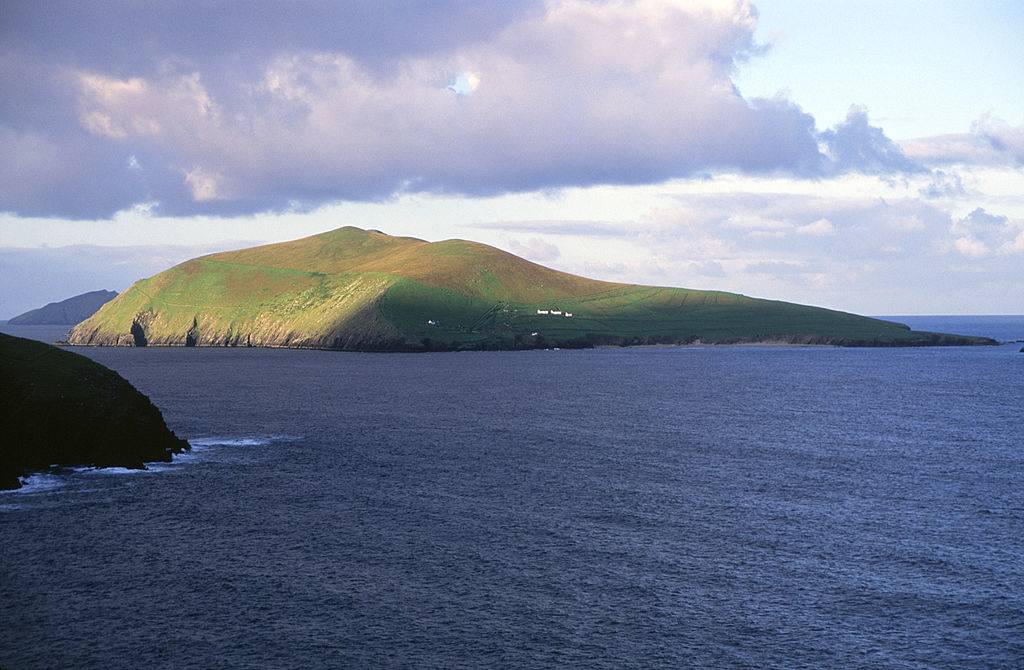
Located off the coast of Ireland, the Blasket Islands were once populated by a completely Irish-speaking population. During its peak, the island was home to 175 residents. Then the population began to decline, with resident numbers dwindling down to 22 by 1953.
Due to the extreme weather of the island that would cut off the remaining people from emergency services, the government evacuated them on November 17, 1953. Today, no one calls Blasket Island home. But day-trippers are able to ferry over to the island and do a bit of exploring, or even camp overnight.
Fort Drum – The Philippines
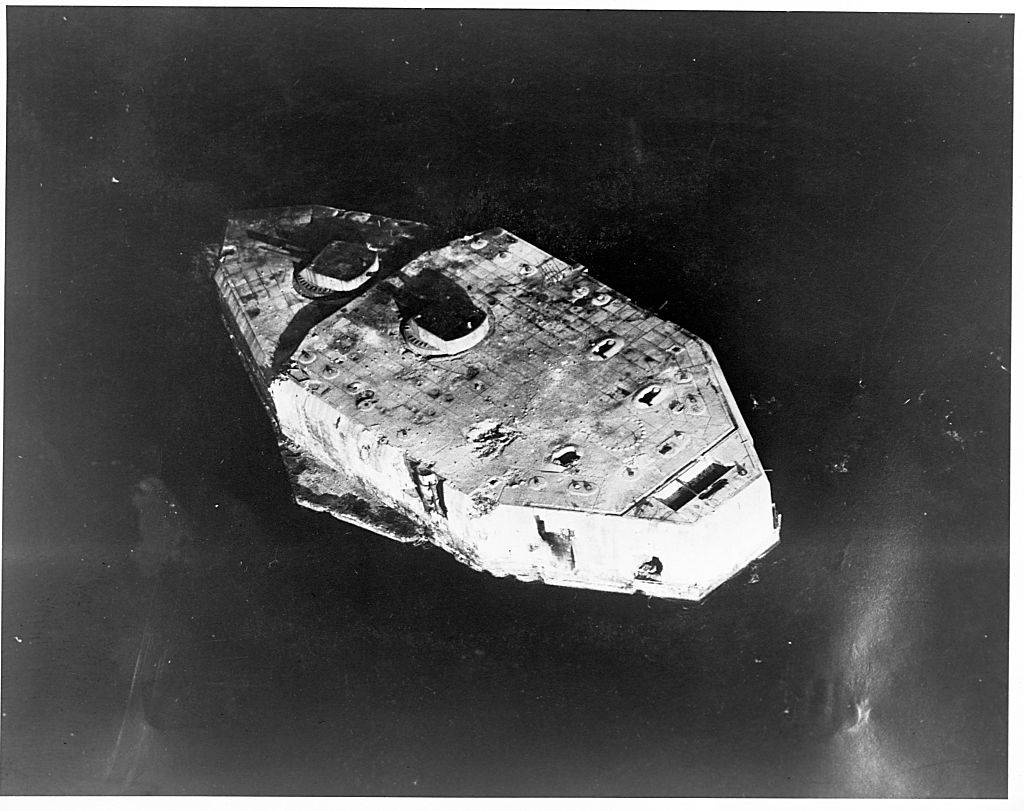
Built by the United States in 1909, Fort Drum is a heavily fortified island in the Manila Bay. Originally designed as a harbor defense during American colonization, it was captured and occupied by the Japanese during World War II. “The Concrete Battleship” wasn’t in their hands for long, though.
The United States recaptured the fort after dumping gasoline and petroleum throughout its interior, lighting it on fire, and putting it out of permanent commission. Fort Drum and its ruins are now abandoned in the bay.
The Auckland Islands – New Zealand
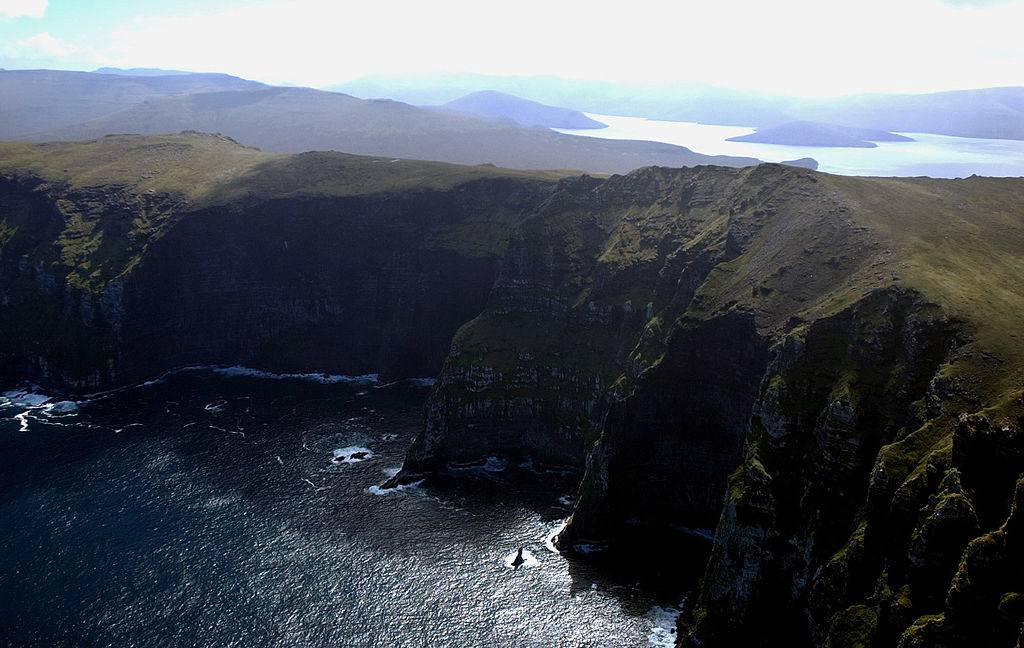
Lying 465 kilometers south of the South Island of New Zealand are the abandoned Auckland Islands. Archeologists believe that the islands were first found by Polynesian voyagers, as traces of a settlement have been found on Enderbury Island, dating back to possibly the 13th century.
Then, in 1806, the island was rediscovered by whalers who set up the base on the islands to hunt seals. Unfortunately, by 1812, so many seals had been killed that people stopped journeying to the islands, leaving them abandoned. Now, the land is mostly used for scientific research with no permanent residents living on the Aukland Islands.
Mu Ko Ang Thong – Thailand
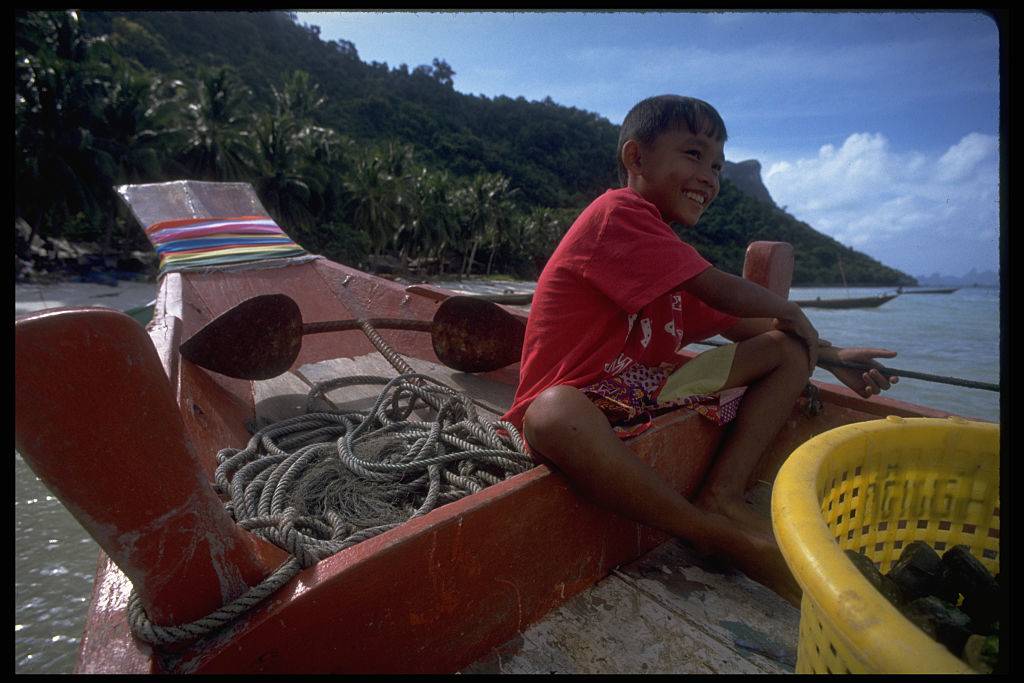
Mu Ko Ang Thong is a chain of 42 islands located in the Gulf of Thailand. The limestone islands are teeming with wildlife, thanks to its tropical forests and surrounding warm waters. With “ang thong” translating to bowl of gold, it’s no surprise that the chain is a hot tourist spot.
People come to Mu Ko Ang Thong to snorkel, scuba dive, and even camp overnight. And while no one permanently lives on the Mu Ko Any Thong, local fishermen do work as vendors during tourist season.
Jaco Island – East Timor
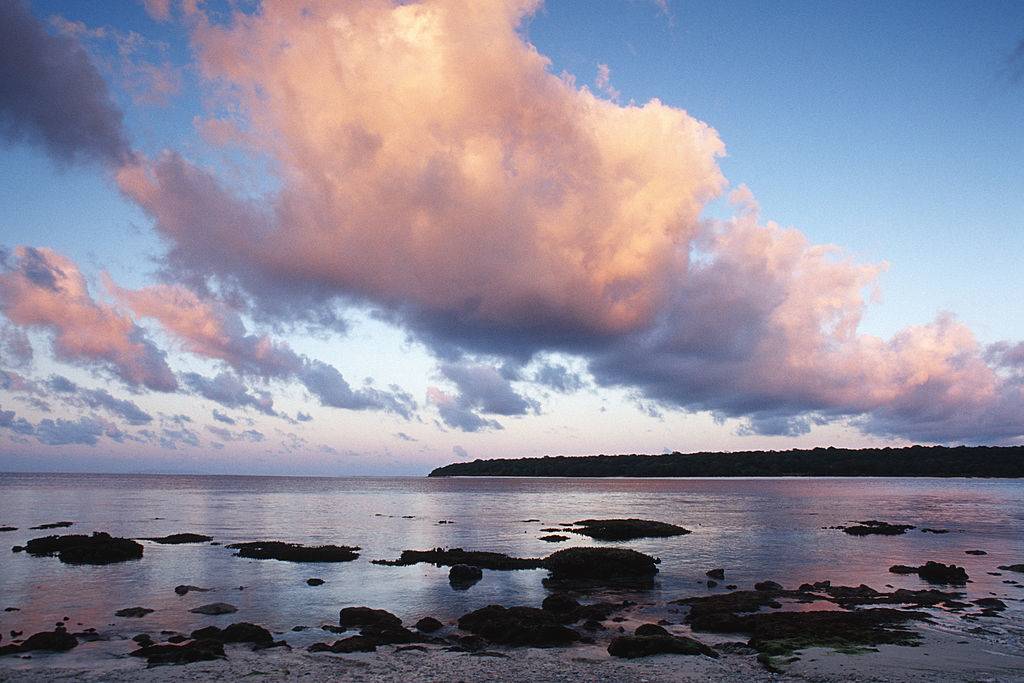
Located in the territory of East Timor, Jaco Island has never been inhabited by humans. The beautiful Southeast Asian island is thought to be sacred by the locals because of the meeting of the two seas surrounding the island. But just because no one lives on the island doesn’t mean locals don’t shuttle tourists back and forth.
Surrounded by some of the world’s best coral reefs, Jaco Island is a hotspot for day-trippers who want to go snorkeling, scuba diving, or even overnight camping. Local fishermen even work as vendors on the island, although they don’t permanently live there.
Dry Tortugas – Key West, Florida
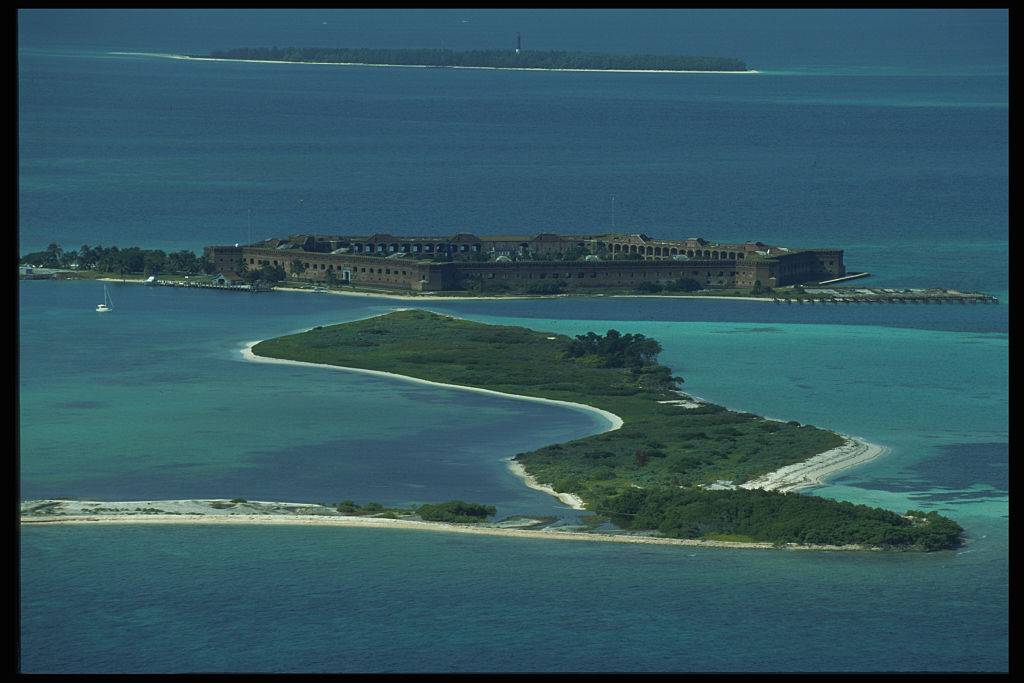
Named by Juan Ponce de Leon in 1513, Dry Tortugas has been used for a few different reasons. First utilized as a shipping corridor, the island transformed into Fort Jefferson, the Navy’s anti-piracy fortress. While the fortress was never technically fully operational, it was also used as a prison for Civil War deserters.
After its abandonment in 1874, the fortress was registered as a national monument and Dry Tortugas as a national park consisting of seven of the Florida Keys. While no one lives on the island full-time, tourists are still allowed to visit.
Cumberland Island – Georgia
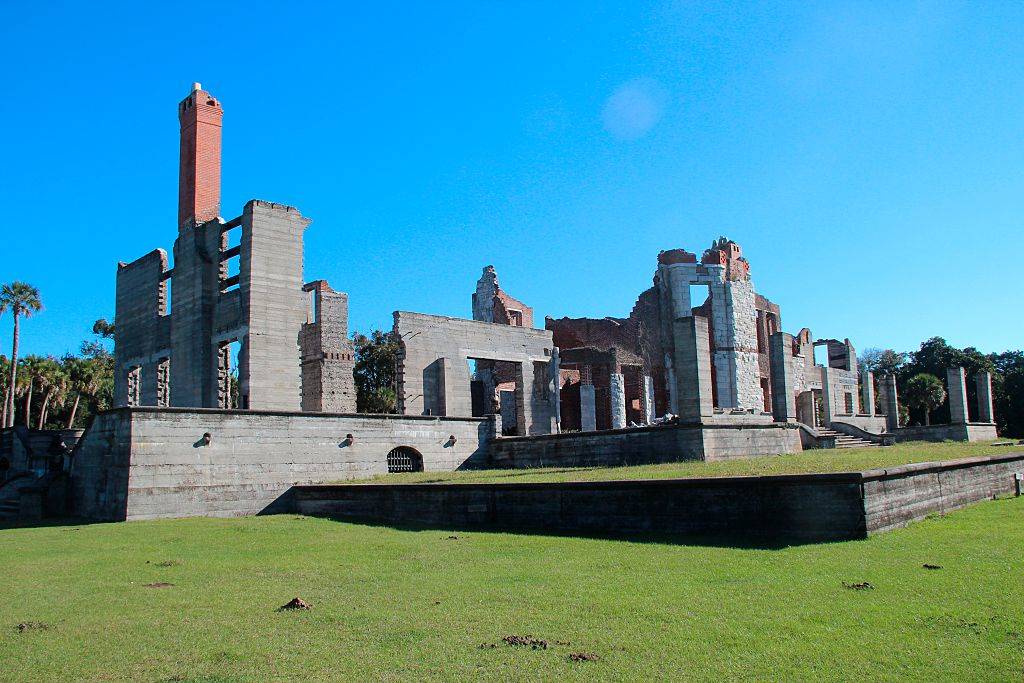
Cumberland Island, located in Georgia, USA, was once home to Native Americans before the Spanish settlers came in to claim the land as their own. Then, when French pirates attacked, they claimed the land in the name of the English, with forts designed to ward off, ironically, the Spanish.
After all of the fightings came to an end, the Carnegie family used Cumberland Island as a holiday retreat, building Dungeness Mansion on the land. Unfortunately, the mansion was burnt down in 1959. While Cumberland Island has since been abandoned, people are still able to visit the remains.
Bishop Rock

Thirty miles southwest of Britain, in the Isles of Sicily, lies Bishop Rock. According to the Guinness Book of World Records, it is the smallest island in the word with a building on it. That building is a lighthouse that marked an end of the North Atlantic shipping route.
In 1992, the lighthouse became fully automated, and no one stepped on the island anymore. Cruises can navigate around Bishop Rock, but don’t expect to explore the lighthouse. You can only gaze upon it from afar.
Macquarie Island

Macquarie Island is a UNESCO World Heritage Site between New Zealand and Antarctica. Despite being such a famous island, few people step foot on it. Tourists can see it only a few times a year, on a tour of the New Zealand Subantarctic Islands. But what makes Macquarie so special?
Unlike other restricted islands, Macquarie isn’t covered with snakes or sharks–but penguins. Macquarie hosts the largest penguin breeding sites in the world, and its species are protected. Only 40 people can live on Macquarie at a time to preserve the wildlife population.
Fort Carroll – Maryland

Fort Carroll is an artificial island located off the coast of Baltimore, Maryland. Constructed back in 1847 for the United States War Department, the island’s hexagonal structure was designed to protect the city of Baltimore. But after World War I broke out, all weapons were removed from the fort.
Then, in March 1921, the United States Army officially abandoned Fort Carroll, moving whatever was left in the base to nearby Fort Howard. For $10,000, Benjamin Eisenberg purchased the island in 1958, intending to build a casino on the land. It never happened, and the island’s been vacant ever since.
Réunion Island
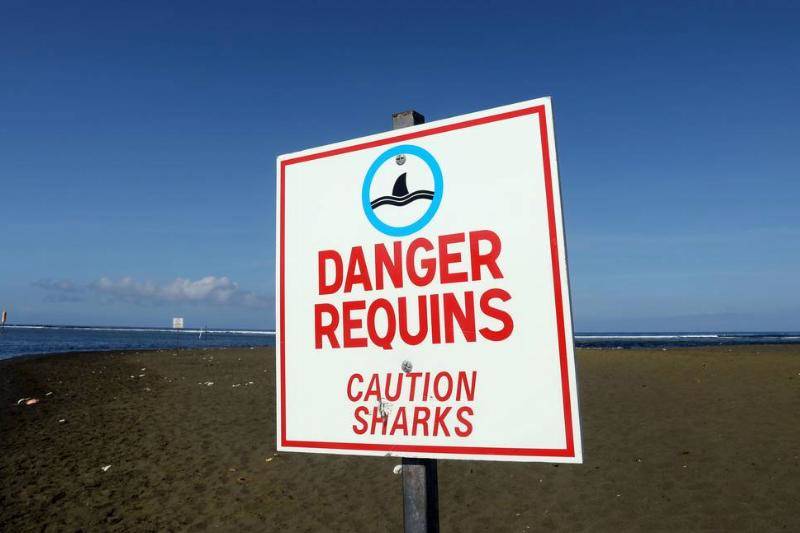
Réunion Island used to be one of France’s best surfing spots. But in 2011, shark attacks skyrocketed. Experts believe that the growing fish population in the nearby marine reserve attracted dangerous sharks like tiger sharks. In 2015, the issue got so bad that the French Surfing Federation closed off the island.
Swimmers and surfers are now banned from Réunion Island. In the meantime, the Ciguatera-Program has been hunting off the population. This decision has faced controversy over the years, but the fatal shark attacks continue to scare people away.
Enewetak Atoll

Five thousand miles off the coast of Los Angeles lies the Marshall Islands. Since World War II, one of the island chains–Enewetak Atoll–became closed to visitors. Between 1946 and 1958, the U.S. performed 43 nuclear tests there. Enewetak Atoll is too dangerous to visit, even today.
Between 1977 and 1980, the U.S. decontaminated the islands, but tourists are still discouraged from going there. One of the islands, Runit Island, is home to The Dome, a concrete area the size of a football field. Inside the Dome lies 85,000 cubic meters of toxic waste. It’s no vacation site.
Farallon Islands

The four Farallon Islands lie just outside of San Francisco, California. Some tourists take boat trips around the islands, but few step foot on them. Mariners call them the Devil’s Teeth Islands because of how dangerous they are. Between 1946 and 1970, 47,500 55-gallon drums of radioactive waste were dumped there.
Despite being clean, the Farallon Islands still have dangerous weather and wildlife. Orcas and elephant seals use the site as a breeding ground. Although most people can’t visit, the California Academy of Sciences offers a live webcam for students to watch the islands.
Surtsey Island
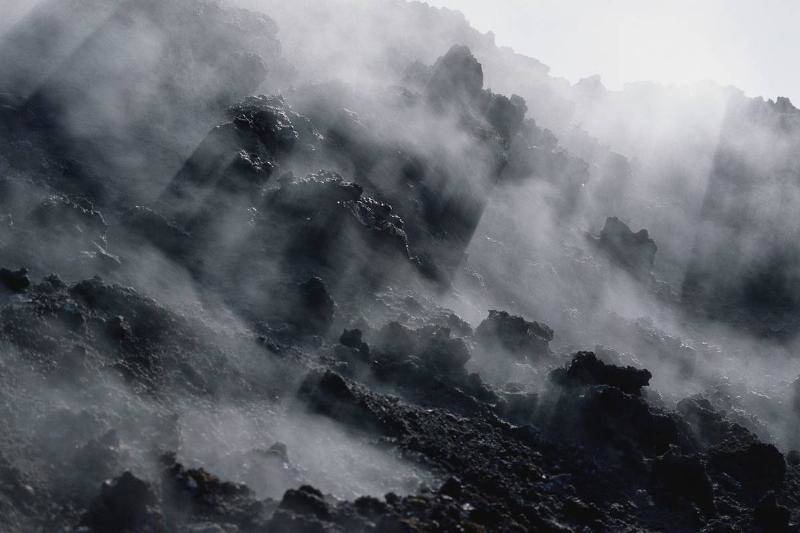
Surtsey Island, which lies 20 miles off the coast of Iceland, has not been occupied since its birth. The island formed in the 1960s after volcanoes erupted 430 feet below sea level. Scientists jumped at the chance to observe how ocean currents bring bacteria and fungi to create an island. As a result, Surtsey is highly protected and prohibited to visitors.
Surtsey is a UNESCO World Heritage site that most people will never see up-close. Today, the island is formed enough to host marine life and birds. Boating, swimming, and construction are not allowed near Surtsey.



